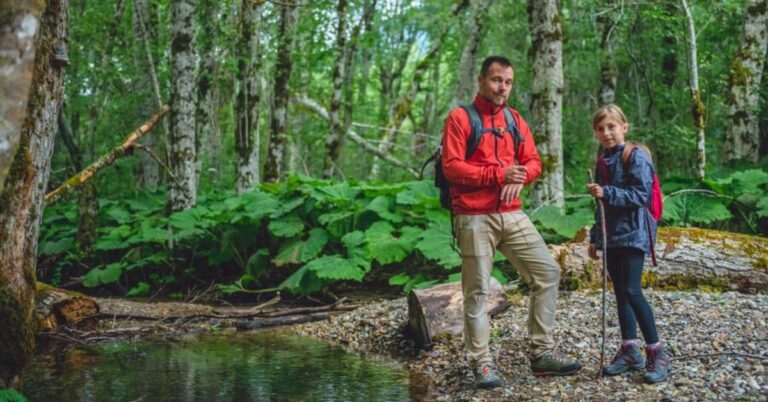Discovering Annapurna The Path to Base Camp
Embarking on the journey to Annapurna Base Camp is akin to stepping into a realm where nature’s grandeur and human resilience intertwine in a breathtaking dance. Nestled in the heart of the Annapurna Himalayas, this trek is not merely a physical expedition but an immersive adventure that reveals the profound beauty and cultural richness of Nepal. From the lush valleys to the snow-capped peaks, the path to Annapurna Base Camp is a narrative of transformation, both in landscape and in the trekker’s spirit.
The adventure begins in the picturesque city of Pokhara, a serene gateway to the Himalayas. The drive or flight from Pokhara to Nayapul marks the start of the trek, where the real journey begins. The trail meanders through verdant terraced fields and charming villages, each step bringing trekkers closer to the majestic heights of Annapurna. The initial leg of the trek takes you through lush forests of rhododendron and oak, where the air is filled with the fragrance of blooming flowers and the sounds of chirping birds.
As the path ascends, the landscape transforms dramatically. Annapurna Trek The dense forests give way to open alpine meadows, and the warmth of the lower altitudes is replaced by the crisp, invigorating air of the high Himalayas. Villages like Tikhedhunga and Ghorepani offer a glimpse into the traditional lifestyles of the Gurung and Magar people, with their welcoming hospitality and vibrant culture. A detour to Poon Hill rewards trekkers with an unforgettable sunrise view, where the first light of day casts a golden hue over the snow-clad peaks of the Annapurna and Dhaulagiri ranges.
The trek continues through the Modi Khola Valley, where the terrain becomes more rugged and the air thinner. Each step brings trekkers closer to the high-altitude environment of Annapurna Base Camp. As you ascend past Chhomrong and Dovan, the trail becomes increasingly remote and serene. The final approach to Annapurna Base Camp is nothing short of awe-inspiring. Surrounded by a dramatic amphitheater of towering peaks, including Annapurna I and Machapuchare, the camp itself is a place of profound stillness and majesty. Here, the sheer scale of the mountains is both humbling and exhilarating, offering panoramic views that are etched into the memory of every trekker.
The journey to Annapurna Base Camp is more than just a physical challenge; it is a voyage through a land of extraordinary beauty and cultural depth. The path to the base camp is a testament to the spirit of adventure and the allure of the Himalayas, promising an experience that is both transformative and unforgettable. Whether it’s the physical challenge of the trek or the serene beauty of the high-altitude landscapes, discovering Annapurna is an adventure that leaves an indelible mark on the soul.
Introduction to Annapurna
The Annapurna region, located in central Nepal, is renowned for its stunning natural beauty and challenging trekking routes. Dominated by the Annapurna massif, which includes several of the world’s highest peaks, this area offers a diverse range of landscapes, from lush subtropical forests to barren high-altitude deserts. The Annapurna range is part of the larger Himalayan mountain system and is famous for its dramatic topography and breathtaking views. The region is not only a haven for trekkers but also holds a significant place in the hearts of mountaineers and nature enthusiasts. With its impressive peaks, including Annapurna I, the 10th highest mountain in the world, the area attracts adventurers from across the globe seeking both challenge and beauty.
The Significance of Annapurna Base Camp
Annapurna Base Camp Trek accommodation is a pivotal destination in the Annapurna region, offering trekkers an unparalleled vantage point to view the majestic peaks of the Annapurna massif. At an elevation of 4,130 meters, the base camp is surrounded by a dramatic amphitheater of snow-clad mountains, including Annapurna I, Annapurna South, and Machapuchare. This location provides a unique perspective on the grandeur of the Himalayas, making it a coveted goal for trekkers. Beyond its stunning scenery, Annapurna Base Camp holds cultural and spiritual significance for many. The trek to the base camp not only challenges physical endurance but also offers a deep sense of accomplishment and connection to the natural world. The journey itself is a rich experience, weaving through traditional villages and diverse landscapes, making the destination both a physical and emotional milestone.
Planning Your Trek
Planning a trek to Annapurna Base Camp involves several key considerations to ensure a successful and enjoyable experience. Start by determining the best time to trek, with pre-monsoon spring (March to May) and post-monsoon autumn (September to November) offering the most favorable weather conditions. Choose an itinerary that suits your schedule and fitness level, as the trek typically spans 7 to 12 days. It is crucial to arrange permits, such as the Annapurna Conservation Area Permit (ACAP) and the Trekkers’ Information Management System (TIMS) card, well in advance. Decide whether to trek independently or join a guided tour, considering factors like navigation and local knowledge. Additionally, preparing for altitude sickness by planning rest days for acclimatization and ensuring you have appropriate gear and supplies will contribute to a smooth trekking experience.
Essential Gear and Packing List
Packing the right gear is essential for a successful Annapurna Base Camp trek. Start with sturdy trekking boots that provide good ankle support and traction on varied terrain. Layering is key, so include thermal base layers, a fleece jacket, and a waterproof and windproof outer layer. A high-quality sleeping bag rated for cold temperatures is necessary, along with trekking poles to aid in stability. Other essentials include a durable daypack, water bottles or hydration system, a headlamp with extra batteries, and a first-aid kit. Don’t forget sun protection, such as sunglasses and sunscreen, as well as a hat and gloves for cold weather. Proper packing ensures you’re prepared for the trek’s diverse conditions, from sunny valleys to snowy high-altitude environments.
Arrival in Nepal: First Steps
Upon arriving in Nepal, your first steps involve navigating through Tribhuvan International Airport in Kathmandu, the main entry point for international travelers. Once in Kathmandu, you’ll need to complete several administrative tasks, including obtaining necessary permits for the trek, such as the Annapurna Conservation Area Permit (ACAP) and the Trekkers’ Information Management System (TIMS) card. After handling these formalities, most trekkers proceed to Pokhara, a picturesque city that serves as the gateway to the Annapurna region. You can reach Pokhara via a domestic flight or a scenic drive. In Pokhara, final preparations for the trek, including meeting with guides or trekking agencies and checking your gear, are completed before heading to Nayapul to start the trek. Ensuring you have everything in order upon arrival sets the stage for a smooth and enjoyable trekking experience.
Trekking Routes and Itineraries
The Annapurna Base Camp trek features several routes and itineraries designed to cater to different preferences and time constraints. The classic trek typically spans 7 to 12 days, starting from Nayapul and winding through scenic landscapes and traditional villages. The standard route includes stops at Tikhedhunga, Ghorepani, and Poon Hill, offering spectacular sunrise views over the Himalayas. From Poon Hill, trekkers continue through Tadapani, Chhomrong, and Dovan, eventually reaching Machapuchare Base Camp before arriving at Annapurna Base Camp itself. This itinerary provides a comprehensive experience of the region’s natural beauty and cultural heritage. Shorter treks are also available, focusing on key highlights like Ghorepani and Poon Hill, allowing trekkers to enjoy some of the trek’s best features without committing to the full route. Each itinerary is designed to balance trekking challenges with opportunities to acclimate and appreciate the stunning Himalayan scenery.
Accommodations Along the Trail
Accommodations along the ABC Trek vary from basic teahouses to more comfortable lodges, with options that reflect the trek’s progressive altitude and isolation. In lower-altitude villages like Tikhedhunga and Ghorepani, trekkers can find simple yet cozy teahouses offering hearty meals and essential amenities. As the trek ascends, lodging becomes more basic, especially in higher altitudes. The lodges near Annapurna Base Camp are more rudimentary but provide necessary services such as bedding, meals, and communal areas. While amenities may be limited at higher altitudes, the focus is on ensuring trekkers have a warm and safe place to rest. The teahouses and lodges offer traditional Nepali meals and some basic Western options, catering to the dietary needs of trekkers and providing a communal atmosphere where adventurers can share their experiences.
Health Precautions and Safety Measures
Maintaining health and safety on the Annapurna Base Camp trek is crucial for a successful experience. Acclimatization is key to preventing altitude sickness; trekkers should follow a gradual ascent, incorporating rest days to allow their bodies to adjust to the higher elevations. Staying hydrated, eating high-energy foods, and avoiding overexertion are important for maintaining stamina and health. Trekkers should also be prepared for rapidly changing weather conditions by packing appropriate clothing and gear. It’s advisable to carry a well-stocked first-aid kit and familiarize yourself with symptoms of altitude sickness, such as headaches, nausea, and dizziness. Having a comprehensive travel insurance policy that covers trekking at high altitudes provides additional safety. Lastly, knowing emergency procedures and having access to communication devices can be crucial in case of unforeseen situations.
Cultural and Historical Insights
The Annapurna Base Camp trek offers a rich tapestry of cultural and historical insights, reflecting the diverse heritage of the region. The trek passes through traditional villages inhabited by ethnic groups such as the Gurung and Magar, who maintain centuries-old customs and lifestyles. Visitors often experience traditional Nepali hospitality and have the opportunity to learn about local festivals, religious practices, and daily life. The region also has historical significance due to its role in the exploration and mapping of the Himalayas, with Annapurna I being the first 8,000-meter peak to be successfully climbed. Trekkers can visit local temples, monasteries, and cultural landmarks, gaining a deeper appreciation of the spiritual and historical context of the area.
Local Cuisine and Dining Options
Local cuisine along the Annapurna Base Camp trek offers a delightful array of flavors that reflect the region’s culinary traditions. In the lower-altitude villages, trekkers can enjoy hearty Nepali dishes such as dal bhat (rice and lentil soup), momo (dumplings), and various vegetable curries. As the trek progresses, the menu in teahouses and lodges adapts to the availability of ingredients, with simpler meals becoming more common. Despite the more basic options at higher altitudes, meals are typically nutritious and designed to meet the needs of trekkers. In addition to traditional Nepali fare, some lodges offer basic Western dishes like pasta, noodles, and soups. Dining on the trek is a communal experience, providing an opportunity to socialize with fellow trekkers and share stories of the journey while enjoying the local cuisine.
Navigating the Trek: Maps and Navigation
Navigating the Annapurna Base Camp trek Map requires a combination of reliable maps, navigation tools, and local knowledge. Detailed trekking maps are invaluable, offering essential information on trail routes, elevations, and key landmarks. These maps help trekkers stay oriented and plan their daily progress. In addition to physical maps, digital navigation tools like GPS devices and smartphone apps can provide real-time tracking and route information. However, it’s important to note that electronic devices can face battery limitations and connectivity issues in remote areas. For this reason, carrying a traditional compass alongside your map is advisable. Many trekkers opt to join guided tours or hire local guides, whose extensive knowledge of the trails ensures safe and efficient navigation. Guides can also provide insights into the terrain and assist with any route deviations or obstacles, enhancing the overall trekking experience.
Environmental Awareness and Conservation
Environmental awareness and conservation are crucial aspects of trekking in the Annapurna region, given its status as a protected area within the Annapurna Conservation Area. Trekkers should adhere to Leave No Trace principles to minimize their impact on the environment. This includes properly disposing of waste, using designated toilet facilities, and avoiding contamination of natural water sources. To protect local wildlife and preserve natural habitats, trekkers should respect wildlife and avoid disturbing the flora and fauna. Supporting eco-friendly lodges and practices, such as those that use sustainable energy sources and minimize waste, contributes to the preservation of the region. Additionally, engaging in local conservation efforts, such as participating in clean-up drives or donating to environmental organizations, helps ensure that the beauty of the Annapurna region is maintained for future generations.
Weather Conditions and What to Expect
Weather conditions on the Annapurna Base Camp trek can vary significantly depending on the season and altitude. During the pre-monsoon spring (March to May) and post-monsoon autumn (September to November), the weather is generally favorable, with clear skies and moderate temperatures, making it the ideal time for trekking. Spring offers the added benefit of blooming rhododendrons, while autumn provides crisp air and excellent visibility. Winter can bring heavy snowfall and extremely cold temperatures, while the monsoon season (June to August) is characterized by heavy rains, which can lead to slippery trails and potential landslides. Trekkers should be prepared for rapidly changing conditions by packing appropriate clothing and gear, including layers to manage temperature fluctuations and rain gear for possible downpours. Staying informed about weather forecasts and being adaptable to changing conditions are key to a safe and enjoyable trek.
Common Challenges and Solutions
The Annapurna Base Camp trek Itinerary presents several common challenges that trekkers should be prepared to address. One of the primary concerns is altitude sickness, which can be mitigated by ascending slowly, incorporating acclimatization days, and staying well-hydrated. Weather conditions can also pose challenges, with sudden changes requiring trekkers to be prepared with appropriate clothing and gear. Physical fatigue is another challenge, especially on steep or uneven terrain; maintaining a steady pace, taking regular breaks, and ensuring proper nutrition and hydration can help manage this. Navigation difficulties can arise, particularly in remote sections of the trail; having reliable maps, a compass, and possibly a guide can assist in overcoming these challenges. Additionally, trekkers should be aware of and respect local customs and environmental regulations to ensure a respectful and responsible trek.
Final Tips and Preparing for the Journey
Preparing for the Annapurna Base Camp trek involves several crucial steps to ensure a successful and enjoyable experience. Begin by obtaining the necessary permits, including the Annapurna Conservation Area Permit (ACAP) and the Trekkers’ Information Management System (TIMS) card. Ensure that your physical fitness is up to par by engaging in regular cardiovascular and strength training exercises. Pack wisely, including essential gear such as durable trekking boots, layered clothing, and a high-quality sleeping bag. Familiarize yourself with the trek’s route and potential challenges to better manage expectations and preparation. Additionally, consider travel insurance that covers high-altitude trekking for added security. Upon arrival in Nepal, complete administrative tasks, finalize your trek preparations in Pokhara, and stay flexible in case of any last-minute changes. Embrace the adventure with an open mind, respect for local culture and environment, and a readiness for the unexpected, ensuring a memorable and rewarding trekking experience.







